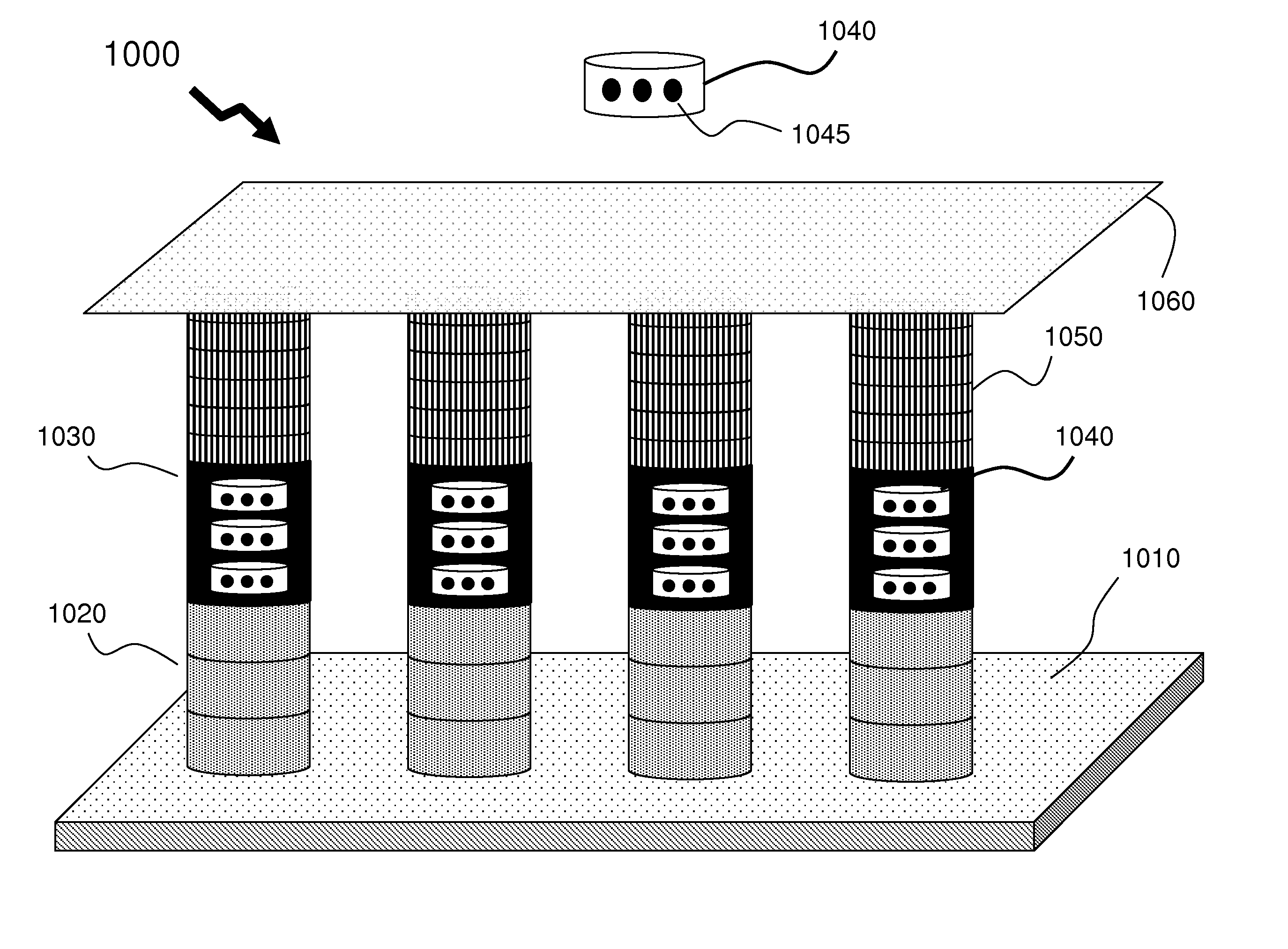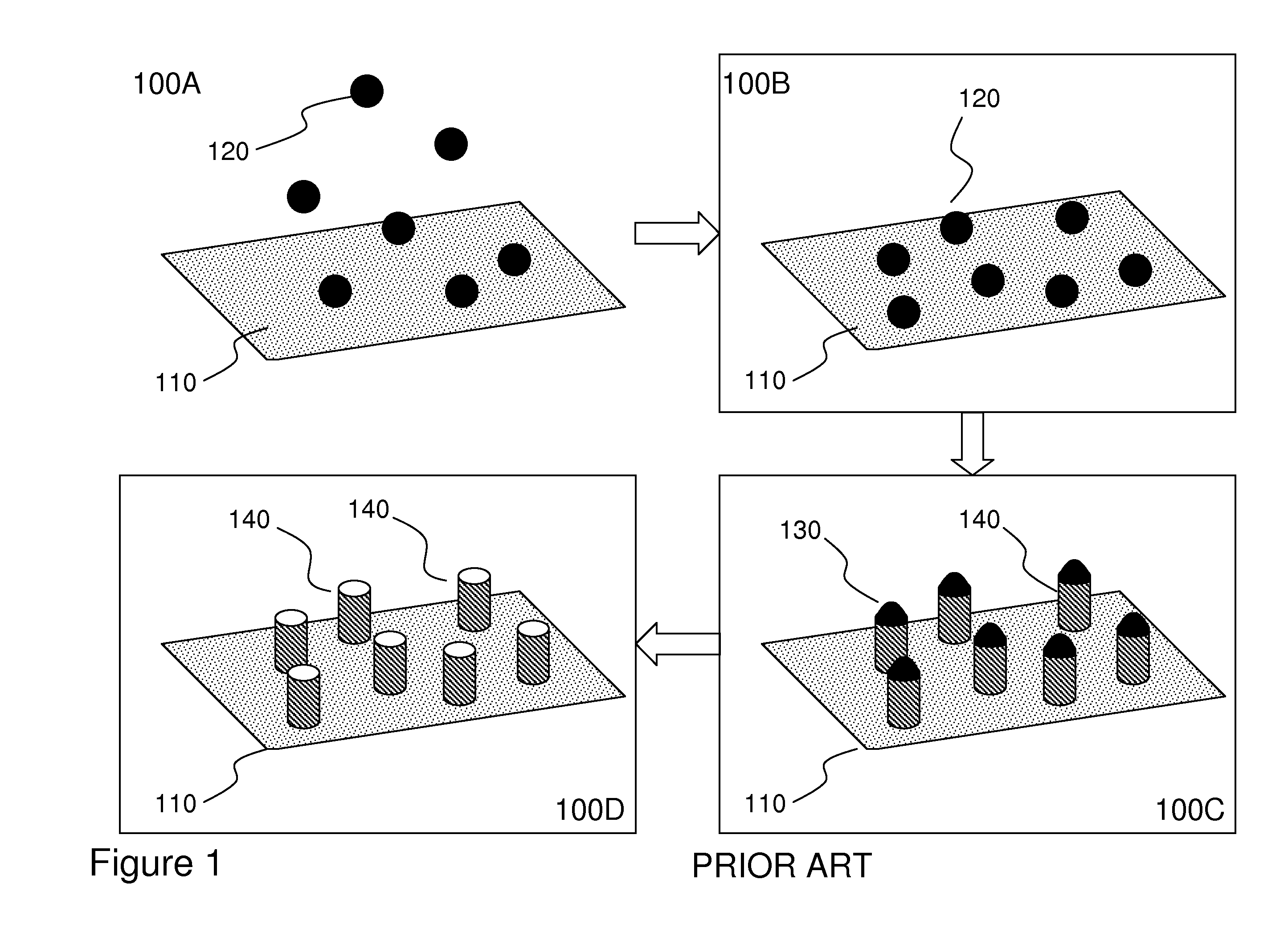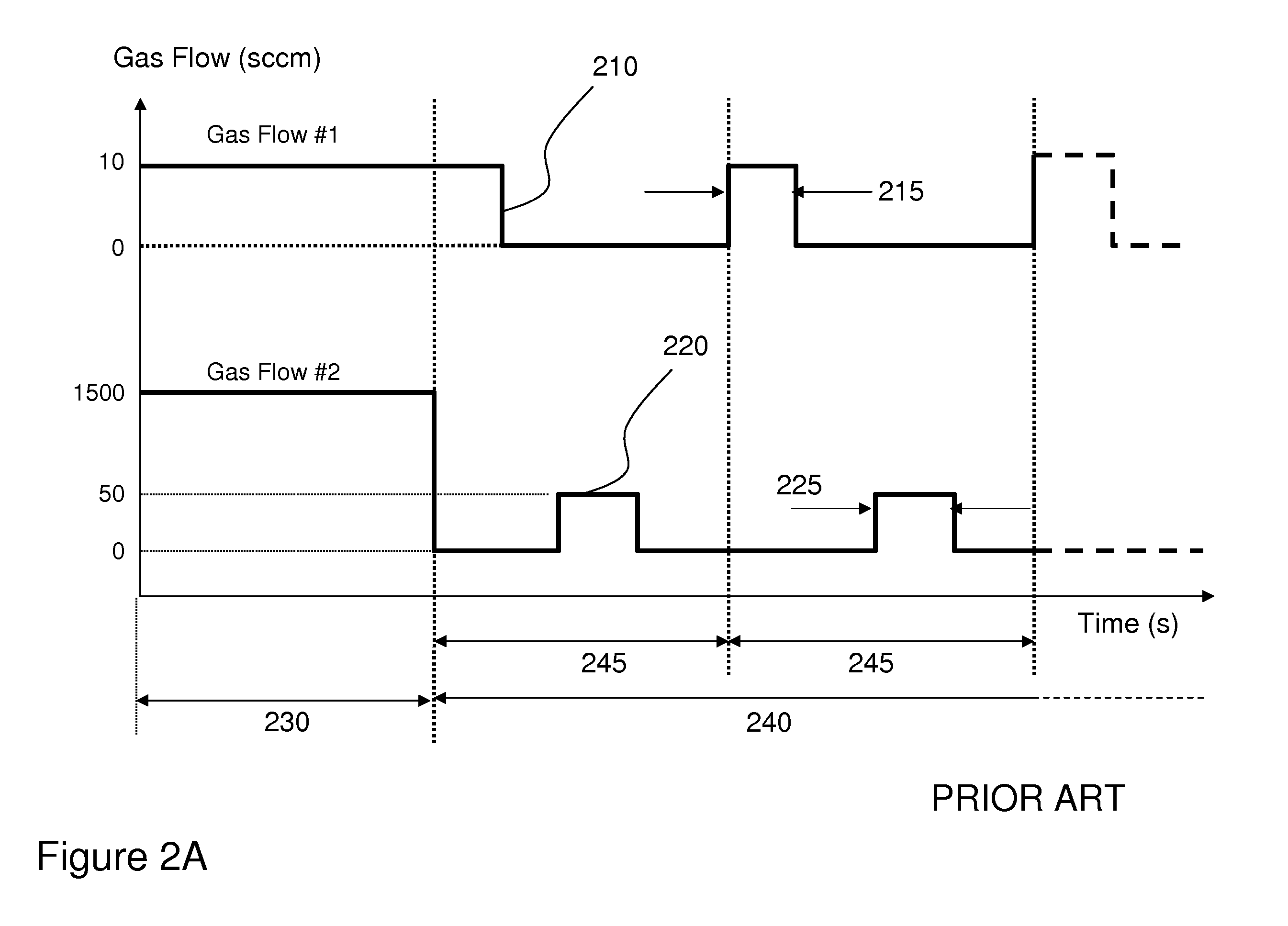Method of Growing Uniform Semiconductor Nanowires without Foreign Metal Catalyst and Devices Thereof
a technology of semiconductor nanowires and metal catalysts, applied in the field of semiconductor nanowires, can solve the problems of low affecting the health and safety of mercury content, and requiring long tubes and limiting power output, and reducing the efficiency of such light sources
- Summary
- Abstract
- Description
- Claims
- Application Information
AI Technical Summary
Problems solved by technology
Method used
Image
Examples
Embodiment Construction
[0067]The present invention is directed to the growth of InGaN nanowires and devices thereof for high efficiency solid state light sources.
[0068]Reference may be made below to specific elements, numbered in accordance with the attached figures. The discussion below should be taken to be exemplary in nature, and not as limiting of the scope of the present invention. The scope of the present invention is defined in the claims, and should not be considered as limited by the implementation details described below, which as one skilled in the art will appreciate, can be modified by replacing elements with equivalent functional elements.
[0069]Referring to FIG. 1 there is shown a sequence of growing nanowires according to the prior art with a foreign metal catalyst. Such prior art using the vapor-liquid-solid (VLS) growth mechanism including for example J. Li et al in U.S. Pat. No. 6,831,017 entitled “Catalyst Patterning for Nanowire Devices”, L. Romano et al in U.S. Pat. No. 7,344,961 ent...
PUM
 Login to View More
Login to View More Abstract
Description
Claims
Application Information
 Login to View More
Login to View More - R&D
- Intellectual Property
- Life Sciences
- Materials
- Tech Scout
- Unparalleled Data Quality
- Higher Quality Content
- 60% Fewer Hallucinations
Browse by: Latest US Patents, China's latest patents, Technical Efficacy Thesaurus, Application Domain, Technology Topic, Popular Technical Reports.
© 2025 PatSnap. All rights reserved.Legal|Privacy policy|Modern Slavery Act Transparency Statement|Sitemap|About US| Contact US: help@patsnap.com



